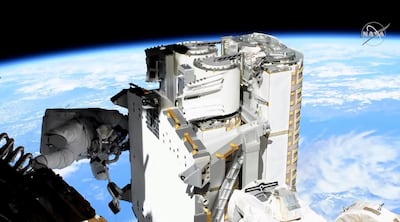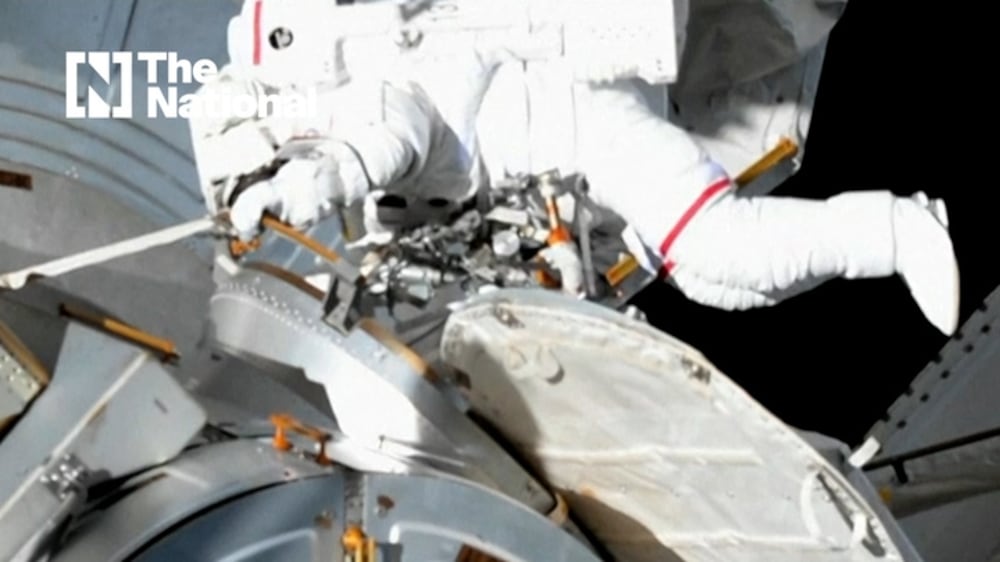Spacesuit problems prevented astronauts from completing the installation of powerful new solar panels on the International Space Station on Wednesday.
Nasa astronaut Shane Kimbrough encountered a pair of spacesuit issues midway through the seven-hour spacewalk, forcing him to temporarily return to the airlock to reset his equipment.
The interruption put Mr Kimbrough and French astronaut Thomas Pesquet an hour behind, then they had trouble trying to unfold the solar panel’s booms before time finally ran out.
The two are supposed to venture back out on Sunday, but it is unclear whether that will be delayed or whether the astronauts will wrap up work on the first solar panel or start on a second one.
Nasa wants to re-energise the ageing space station as demand to visit grows.
But there is no urgency to do so, said Mission Control commentator Rob Navias, with the old solar panels providing plenty of power for now.
They will continue to operate in a degraded state, even after the new ones are up and running.
Mission Control stressed that Mr Kimbrough was safe the entire time, despite problems with his suit's display control panel and a fleeting pressure surge in the cooling system.
His control panel came back on and Mission Control continued to monitor his suit’s cooling system.
“We just want to be super safe here,” Mission Control radioed.
It was the first of a series of spacewalks to equip the ageing orbital outpost with six smaller but stronger solar wings.
The electrical boost is needed to accommodate the paying passengers expected to drop by, beginning with a Russian film crew this autumn.
Nasa put extra safety precautions in place as Mr Kimbrough and Mr Pesquet worked on the station's primary power grid to avoid the risk of an electric shock.
The duo conducted the most hazardous parts of the spacewalk on the night-time side of Earth to prevent the station’s old solar panels from soaking up sunlight and generating power. Metal surfaces on their spacesuits were covered to avoid any contact.
Launched by SpaceX this month, the first of these new solar panels will operate alongside the station's oldest electricity-producing wings, in continuous operation for more than 20 years.
The astronauts had to lug the bundled solar wing – 3 metres long by 1 metre wide – to the work site on the far left end of the station. They managed to bolt it into place but could not unfold the booms because of a problem in the mounting bracket.
Once properly installed, the solar panel is designed to roll out like a red carpet 19 metres in length.
Nasa wants to keep the space station churning out science research through this decade, but space tourists will further tax the power system.
A Russian film director and actress are scheduled to visit in October for filming, followed by wealthy entrepreneurs launching from Kazakhstan and Cape Canaveral as part of a push to open up the private space market.








